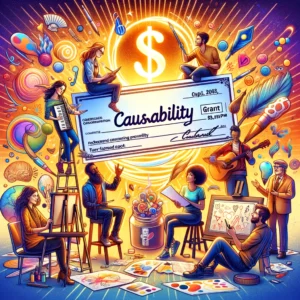Embarking on the journey of securing grants can be a challenging yet rewarding process. Applying for grants, much like any critical endeavor, requires precision, clear articulation, and thorough planning. However, even the most seasoned professionals can occasionally stumble upon common grant application pitfalls. Our aim with this article is to help you identify and navigate these potential errors, ensuring your application stands out in the competitive landscape of grant approvals.
Not Reading the Guidelines Thoroughly
It might seem obvious, but one of the most common errors that applicants make is neglecting to read the grant guidelines thoroughly. These guidelines are designed to help you understand what the grant provider is looking for and to assist you in tailoring your application accordingly.
To avoid this pitfall, take time to read and understand the guidelines in-depth. Make note of the grantor’s objectives, the necessary documents for submission, and any specified formatting or structural requirements. Don’t hesitate to reach out to the grant provider if you have questions or need clarifications.
Applying for the Wrong Grant
A frequent misstep in the grant application process is applying for grants that do not align with the mission or objectives of your organization or project. This is akin to trying to fit a square peg into a round hole; it wastes valuable time and resources.
Research is your best ally here: Investigate the grant opportunities available, ensuring that the grant’s objectives and your mission align perfectly. Only apply for grants where you meet all the eligibility criteria and where your proposed project aligns with the funder’s priorities. For example, if you’re an artist with a cause, you might consider applying to a grant like Causability’s art grant.
Poorly Defined Objectives and Goals
An unclear proposal is likely to get your application moved to the rejection pile. Grantors want to invest in projects where they can foresee tangible outcomes and impacts.
Ensure that your application clearly articulates your project’s objectives, the methods you’ll employ to achieve them, and the outcomes you expect. Clear, measurable goals are far more impressive than lofty, undefined aspirations.
Incomplete Applications
Submitting an incomplete application or missing out on crucial information is another common mistake. A hasty application sends the wrong signal to the grant provider—it appears as if the applicant lacks commitment and thoroughness.
Double-check your application and cross-verify it with the application guidelines before submitting it. Make sure that every section is filled out, and all necessary documents and attachments are included.
Missing Deadlines
Deadlines are set for a reason, and not adhering to them portrays a lack of discipline and respect for the grant provider’s time.
Starting well ahead of the deadline is the best way to avoid late submissions. Make a timeline for your application process, allotting time for research, writing, proofreading, and contingencies.
Ignoring the Budget Section
A common yet detrimental mistake is neglecting the budget section. Grantors need to understand how you plan to utilize their funds.
Ensure that you provide a clear, detailed, and justifiable budget. Explain how each line item in the budget contributes to the project’s goals and the grantor’s objectives.
Not Showing Clear Impact
Failing to communicate the potential impact of your project can leave the grantor questioning its worth.
Take the time to detail the positive changes your project will bring about. Use specific examples, data, and case studies where possible to highlight the potential impact of your project.
Overlooking Evaluation Methods
Grantors often want to know how the success of your project will be measured. Ignoring this aspect can make your proposal appear less convincing.
Make sure to include the specific metrics or key performance indicators (KPIs) you’ll use to measure your project’s success. A clear evaluation plan shows you are results-driven and serious about achieving your project’s objectives.
Lack of Proofreading
Grammatical errors, typos, or confusing language can detract from your application’s quality, no matter how strong your project idea may be.
Proofread your application multiple times and consider having another person review it. This external perspective can catch mistakes you may have overlooked and provide valuable feedback.
Neglecting the Sustainability Aspect
Grantors are often interested in how your project will continue once the grant money has been fully utilized. Failing to address this can make your project seem short-lived.
Ensure that you outline your sustainability plan. Explain how you intend to fund the project after the grant period ends and how you will maintain the project’s impact over time.
Turning Hindsight into Foresight For Your Grant
Securing a grant can be a game-changer for your project or organization, but navigating the application process can be daunting. By understanding these common mistakes and how to avoid them, you can greatly increase your chances of success.
Always remember that the key to a successful grant application is presenting a well-researched, thoroughly prepared proposal that aligns with the grantor’s objectives. Proofread your application, adhere to deadlines, and above all, communicate how your project will make a significant impact. A professional, knowledgeable, and friendly approach can make all the difference.
A Grant For Artists With a Worthwhile Cause
Now that we’ve properly covered the most common mistakes that grant applicants make when applying for grants, Causability would like to introduce you to our grants for artists with a cause: Causability’s artist grants. We believe that artists and nonprofits alike can benefit more from collaborating together on a project rather than just ‘gifting’ their art away.
Therefore, we’re offering three $5000 grants to empower and encourage collaboration — giving artists the ability to collaboratively develop an art related event, program or fundraiser with a local nonprofit.
If you’re an artist with a cause, we’re looking forward to your well-written grant application!



